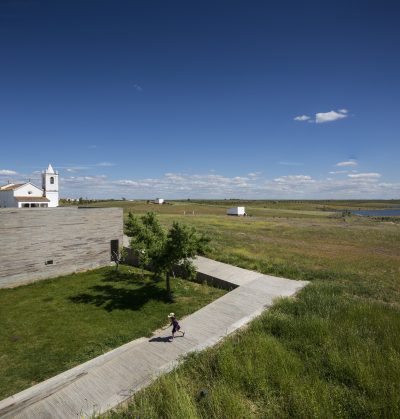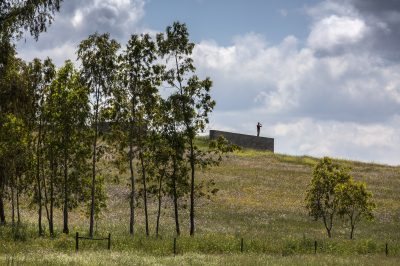Architecture and Landscape
- Home
- Architecture and Landscape

Ever since its beginnings, landscape has been a referent for how the Museum of Luz should be implanted. The museum building rises off the ground as one block of schist, encircled by the new village of Luz to the east and by the Alqueva waters to the west, the castles of Mourão and Monsaraz set against the horizon. The museum’s erudite design, by architects Pedro Pacheco and Marie Clément, nonetheless recalls construction techniques employed in this territory during the Roman period, as the now submerged Lousa castle bears witness to.
The architectural design for the museum has won a number of national and international awards: winner of the ‘Luigi Cosenza’ European Architecture Award in 2004; 4th MENHIR Award, Publicações Menhir, S.L. (Bilbao, Spain); listed among the top ten finalists for the SECIL 2004 Prize; Museum+Church+Cemetery listed among the top five finalists for the International Architecture in Stone Award 2005 (Verona, Italy); Museum+Church+Cemetery entered for Architectural Heritage Conservation, Europa Nostra Award 2006. In addition, Luz Museum featured at the Eurovision centre of the Lisbon Architecture Triennial in 2007.
Other points of interest are characteristic of the museum’s setting: the main church, a replica of the fifteenth-century building that once stood in the old village; ‘Monte dos Pássaros’, a traditional house and the only structure surviving from the old Luz; the road at the foot of ‘Monte dos Pássaros’, which used to lead to Luz and now descends into the waters; and finally the lake, calling for contemplative walks to evoke places now gone, the underwater Lousa castle, or River Guadiana.


